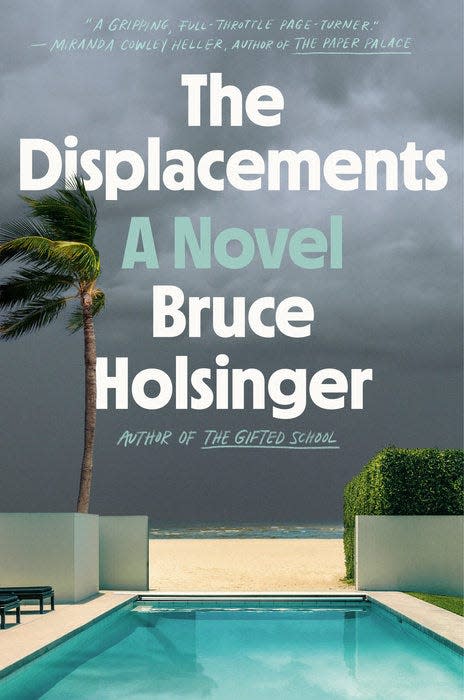'The Displacements': A mega-storm creates American climate-change refugees in harrowing new book
- Oops!Something went wrong.Please try again later.
Will “normal” ever return? That question has resonated with many over the past few years. But a more pressing inquiry is to consider whose normal we mean when we ask.
In Bruce Holsinger’s cinematic new novel "The Displacements" (Riverhead, 448 pp., ★★½ out of four), one privileged white family in the U.S. copes with the life-changing aftermath of Hurricane Luna, the world’s first Category 6 storm. Through interspersed multiple points of view as well as screenshots from an interactive website tracking “the Luna Migration,” Holsinger tells the story of the Miami-based Larsen-Halls: two parents and their three children. In following their quest for recovery, readers are caught up in the epic sweep of hundreds of thousands of others who have also suffered the loss of homes, loved ones and finances.
'A hard book to read': Book about WWII incarceration of Japanese Americans blocked in Wisconsin

Daphne, the family’s sheltered wife and a part-time sculptor, serves as a narrative focal point. As the storm approaches, she is forced to evacuate their palatial property with the children – including a surly step-son, Gavin, recent Stanford dropout – while perfectly named husband Brantley supervises patient transfer at the hospital where he is a top surgeon.
One minor error – Daphne’s left-behind purse – creates a chain effect of trouble, once she and the kids are separated from Brantley and routed to an Oklahoma mega-shelter named Tooley. Running FEMA ops at Tooley is capable Rain Holton, tasked with providing basic needs, logistics and security for ten thousand people in an unprecedented and ongoing mass weather event.
“Two high schools,” she tells herself. “I can run two damn high schools.” We meet other refugees and residents, including a part-time drug dealer who sizes up a big opportunity for sales amid all the misery of the camp.
"The Displacements" shines when it portrays alliances and factions amid the mass of people so suddenly brought together. Positive communities form, including a makeshift library – as do worrying tribes that divide along race and class lines. When Daphne’s daughter Mia befriends Luz, she unwittingly reveals a family’s undocumented status that compounds Luz’s suffering. When Gavin falls in with the drug dealer’s girlfriend, a potentially more violent conflict looms.
The best books of 2022 so far:: How many of these perfect 4-star books have you read?
As the weeks and month go by, Daphne struggles to find a job and housing outside the mega-shelter, but for some reason, cannot connect with anyone she knows (a narrative convenience that isn’t quite persuasive, given her family’s prominence). Then Holsinger delivers a nasty twist to the Larsen-Halls’s story that inserts a well-placed jolt of suspense.
Too often the novel is beset by sloppy clichés (smiles flash, jaws stiffen) and disaster-movie dialogue (“After Tuesday, there’s not going to be a Miami”). Yet "The Displacements" raises other, deeper questions about the place and purpose of “cli-fi.” What is gained or lost when a mainstream novel about mass migration after a mega-storm chooses to center the tribulations of an affluent white family – when we know that our climate emergency disproportionately affects marginalized communities, including the poor and people of color? Does this novel’s “riches to rags” story convey the actual potential harm of a fictional storm like Luna? Or does the author wish to reach a reading population who might still believe in a “normal” that can, or should, return?
These questions, more than the Larsen-Halls’s journey, make "The Displacements" a book worth picking up.
This article originally appeared on USA TODAY: 'The Displacements': Climate refugees flee storm in harrowing book
